Erika Milam in Nautilus:
 Elaine Morgan had sass. In Descent of Woman, published in 1972, she asked her readers to take science into their own hands. “Try a bit of fieldwork,” she suggested. “Go out of your front door and try to spot some live specimens of Homo sapiens in his natural habitat. It shouldn’t be difficult because the species is protected by law and in no immediate danger of extinction.” After completing observations of 20 random people, she suggested, substitute them when you are reading statements about universal human nature. The result?
Elaine Morgan had sass. In Descent of Woman, published in 1972, she asked her readers to take science into their own hands. “Try a bit of fieldwork,” she suggested. “Go out of your front door and try to spot some live specimens of Homo sapiens in his natural habitat. It shouldn’t be difficult because the species is protected by law and in no immediate danger of extinction.” After completing observations of 20 random people, she suggested, substitute them when you are reading statements about universal human nature. The result?
“That window cleaner is one of the most sophisticated predators the world has ever seen.”
“The weapon is my grocer’s principal [sic] means of expression, and his only means of resolving differences.”
“The postman’s aggressive drive has acquired a paranoid potential because his young remain dependent for a prolonged period.”
Morgan added that you might imagine you were observing the wrong species and urged her readers to trust their experiences. “Remember,” she wrote, “you have been living among thousands of these large carnivores all your life, on more intimate terms than those on which Jane Goodall lived among the chimpanzees.”
In positing such a scenario, Morgan was engaged in serious work. All popular theories of human evolution to date, she insisted, were based on a male-centered notion of human evolution. Where were the evolutionary scenarios that began, “When the first ancestor of the human race descended from the trees, she had not yet developed the mighty brain that was to distinguish her so sharply from all the other species…”? This formed one of two major points Morgan wished to make in Descent of Woman.
The second was to advance a theory of aquatic adaptation that preceded life on the savannah. In semi-adaptation to a watery world, she imagined, humanity’s ancestors may have lost their body hair, gained a layer of subcutaneous fat to keep them warm, learned to walk upright (keeping their heads above water while foraging for tasty snacks in the shallows), came to use stones and manufacture tools for breaking open shells, and developed the ability to control their breathing when diving beneath the surface—a precondition for true spoken language and an obvious boon to any individual trying to communicate with most of her body submerged. In short, Morgan suggested humans acquired precisely those traits that distinguish them from the rest of the animal world while living around water, not in the arid grasslands. These activities, she noted, were associated with gathering, not hunting, an activity in which women’s contributions were widely acknowledged.
More here.
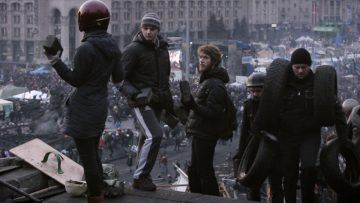 Ukrainian director Sergei Loznitsa once said that his films were about “the decay and disintegration of the former Russian Empire.” With 29 titles under his belt, ranging from fiction to observational and archival documentaries, Loznitsa demonstrates a keen interest in form, particularly in using fictional devices within documentary. He also opposes the recent tendency in Eastern Europe to frame histories with war and authoritarianism in heroic or rosy terms.
Ukrainian director Sergei Loznitsa once said that his films were about “the decay and disintegration of the former Russian Empire.” With 29 titles under his belt, ranging from fiction to observational and archival documentaries, Loznitsa demonstrates a keen interest in form, particularly in using fictional devices within documentary. He also opposes the recent tendency in Eastern Europe to frame histories with war and authoritarianism in heroic or rosy terms.
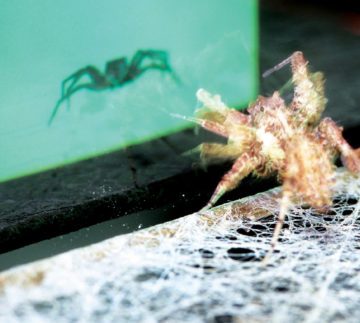 In the 1980s, zoologists were thus astonished to discover that Salticidae, or jumping spiders, a family of the arachnids that contains more than five hundred genera and over five thousand separate species, had vision systems on par with cats, mammals famous for their acute eyesight. With around six hundred thousand neurons in its brain (roughly half that of a fly or a honeybee), a jumping spider can recognize images on a television screen and is the only invertebrate known to be capable of such a sophisticated feat of visual processing. “How does this speck of dust of a brain achieve such a complicated task?” asks Simon Pollard, curator of invertebrate zoology at the Canterbury Museum in Christchurch, New Zealand. “We need to look deep into these unblinking eyes.”
In the 1980s, zoologists were thus astonished to discover that Salticidae, or jumping spiders, a family of the arachnids that contains more than five hundred genera and over five thousand separate species, had vision systems on par with cats, mammals famous for their acute eyesight. With around six hundred thousand neurons in its brain (roughly half that of a fly or a honeybee), a jumping spider can recognize images on a television screen and is the only invertebrate known to be capable of such a sophisticated feat of visual processing. “How does this speck of dust of a brain achieve such a complicated task?” asks Simon Pollard, curator of invertebrate zoology at the Canterbury Museum in Christchurch, New Zealand. “We need to look deep into these unblinking eyes.” T
T It has been said that “the eyes are the window to the soul,” but new research suggests that they may be a window to the brain as well.
It has been said that “the eyes are the window to the soul,” but new research suggests that they may be a window to the brain as well. WHEN WRITERS BEGIN to learn our craft, we’re told to write for ourselves. As one becomes further embedded in the creative process, it can be difficult to work with this pure impulse in mind. Write for ourselves, yes, but if the work never finds readers, what does that say about us? Do stories that exist in a one-sided conversation with their authors have as much value as stories that take on a life of their own?
WHEN WRITERS BEGIN to learn our craft, we’re told to write for ourselves. As one becomes further embedded in the creative process, it can be difficult to work with this pure impulse in mind. Write for ourselves, yes, but if the work never finds readers, what does that say about us? Do stories that exist in a one-sided conversation with their authors have as much value as stories that take on a life of their own? The hydra is a simple creature. Less than half an inch long, its tubular body has a foot at one end and a mouth at the other. The foot clings to a surface underwater — a plant or a rock, perhaps — and the mouth, ringed with tentacles, ensnares passing water fleas. It does not have a brain, or even much of a nervous system.
The hydra is a simple creature. Less than half an inch long, its tubular body has a foot at one end and a mouth at the other. The foot clings to a surface underwater — a plant or a rock, perhaps — and the mouth, ringed with tentacles, ensnares passing water fleas. It does not have a brain, or even much of a nervous system. Israel’s attempt to justify its latest brutal assault on Gaza rings hollow to anybody familiar with events in Israel, where the government of Prime Minister Binyamin Netanyahu, backed by anti-Arab racists, has systematically, cruelly, and persistently violated the basic human rights of the Arab population. Human Rights Watch, a global NGO with many Jewish leaders, has recently condemned Israel for
Israel’s attempt to justify its latest brutal assault on Gaza rings hollow to anybody familiar with events in Israel, where the government of Prime Minister Binyamin Netanyahu, backed by anti-Arab racists, has systematically, cruelly, and persistently violated the basic human rights of the Arab population. Human Rights Watch, a global NGO with many Jewish leaders, has recently condemned Israel for 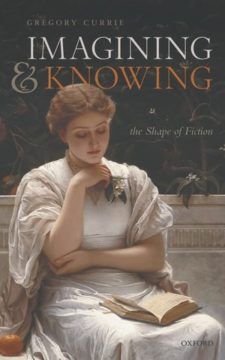 Few would dispute that, all things considered, some exposure to works of imaginative literature (novels, plays, poems) as part of a rounded education is better than no such exposure. Beyond that, disagreements are rife. Culture wars loom, with anxieties over curriculum choice, gender and racial bias, elitism, contested pedagogic methods, and a disconcerting vagueness about aims sought.
Few would dispute that, all things considered, some exposure to works of imaginative literature (novels, plays, poems) as part of a rounded education is better than no such exposure. Beyond that, disagreements are rife. Culture wars loom, with anxieties over curriculum choice, gender and racial bias, elitism, contested pedagogic methods, and a disconcerting vagueness about aims sought. As we traveled from Nabi Saleh to Ramallah by bus, we engaged in a vigorous discussion about the military occupation of the West Bank and whether it resembled apartheid. Yehuda Shaul of BtS told us he had escorted Barbara Hogan, an ANC member and former South African political prisoner, around the occupied territories. Hogan had declared after her tour that apartheid was in fact not an appropriate comparison, because what Hogan saw of Israel’s military occupation of the West Bank was so much more extreme than what she knew of apartheid South Africa. Whatever the correct descriptor might be, the military occupation of the West Bank is hard to understand until you see it. You might be surprised at your own intolerance of the idea of a democracy maintaining an open-air prison for 2.7 million people. Before going there myself, I had heard this phrase, open-air prison, and figured it was not literally a prison. (As someone who spends a fair amount of time in prisons, I’m sensitive to its use as a metaphor.) But everywhere I went I saw guard towers and concrete barriers and razor wire—truly an open-air prison—except where there were settlements, which featured posh, Beverly Hills–style landscaping: little blooming flowers, fragile and bright, the guard towers in the far distance.
As we traveled from Nabi Saleh to Ramallah by bus, we engaged in a vigorous discussion about the military occupation of the West Bank and whether it resembled apartheid. Yehuda Shaul of BtS told us he had escorted Barbara Hogan, an ANC member and former South African political prisoner, around the occupied territories. Hogan had declared after her tour that apartheid was in fact not an appropriate comparison, because what Hogan saw of Israel’s military occupation of the West Bank was so much more extreme than what she knew of apartheid South Africa. Whatever the correct descriptor might be, the military occupation of the West Bank is hard to understand until you see it. You might be surprised at your own intolerance of the idea of a democracy maintaining an open-air prison for 2.7 million people. Before going there myself, I had heard this phrase, open-air prison, and figured it was not literally a prison. (As someone who spends a fair amount of time in prisons, I’m sensitive to its use as a metaphor.) But everywhere I went I saw guard towers and concrete barriers and razor wire—truly an open-air prison—except where there were settlements, which featured posh, Beverly Hills–style landscaping: little blooming flowers, fragile and bright, the guard towers in the far distance.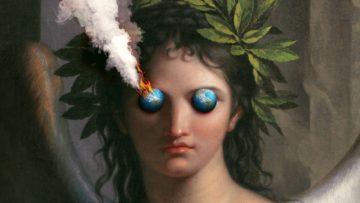 P
P Elaine Morgan had sass. In Descent of Woman, published in 1972, she asked her readers to take science into their own hands. “Try a bit of fieldwork,” she suggested. “Go out of your front door and try to spot some live specimens of Homo sapiens in his natural habitat. It shouldn’t be difficult because the species is protected by law and in no immediate danger of extinction.” After completing observations of 20 random people, she suggested, substitute them when you are reading statements about universal human nature. The result?
Elaine Morgan had sass. In Descent of Woman, published in 1972, she asked her readers to take science into their own hands. “Try a bit of fieldwork,” she suggested. “Go out of your front door and try to spot some live specimens of Homo sapiens in his natural habitat. It shouldn’t be difficult because the species is protected by law and in no immediate danger of extinction.” After completing observations of 20 random people, she suggested, substitute them when you are reading statements about universal human nature. The result?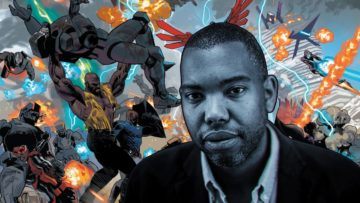 Coates made his name as a journalist and commentator at The Atlantic, writing articles and essays that explored how America’s history of systemic racism continues to affect politics, housing, and other aspects of American life. Marvel reached out to him with the opportunity to write Black Panther in 2015, and those initial scripts would become the first fictional work he’d publish. (He’d been working on his novel,
Coates made his name as a journalist and commentator at The Atlantic, writing articles and essays that explored how America’s history of systemic racism continues to affect politics, housing, and other aspects of American life. Marvel reached out to him with the opportunity to write Black Panther in 2015, and those initial scripts would become the first fictional work he’d publish. (He’d been working on his novel,  A co-worker accuses you of lying during an important client meeting, and you’re furious because you didn’t lie. Expressing that anger, however, isn’t the best way to prove your innocence, according to new research.
A co-worker accuses you of lying during an important client meeting, and you’re furious because you didn’t lie. Expressing that anger, however, isn’t the best way to prove your innocence, according to new research. It is the oldest profession, I say. No, someone reminds me, hunting is the oldest profession. Exactly. But if the quarry is willing, is the hunt ethical? I cannot decide. Does a woman have the right to sell her body freely and legally? Models do. Lady Gaga sells her vocal cords. LeBron James sells his height. In a world that tells us to forge a personal brand and sell ourselves, surely a woman skilled in the art of physical pleasure ought to be able to use that talent to make a living?
It is the oldest profession, I say. No, someone reminds me, hunting is the oldest profession. Exactly. But if the quarry is willing, is the hunt ethical? I cannot decide. Does a woman have the right to sell her body freely and legally? Models do. Lady Gaga sells her vocal cords. LeBron James sells his height. In a world that tells us to forge a personal brand and sell ourselves, surely a woman skilled in the art of physical pleasure ought to be able to use that talent to make a living? W
W